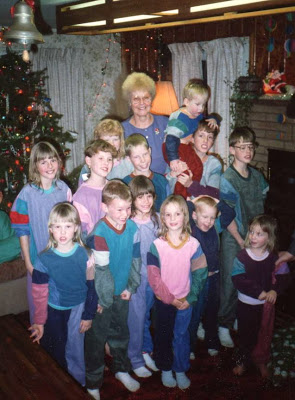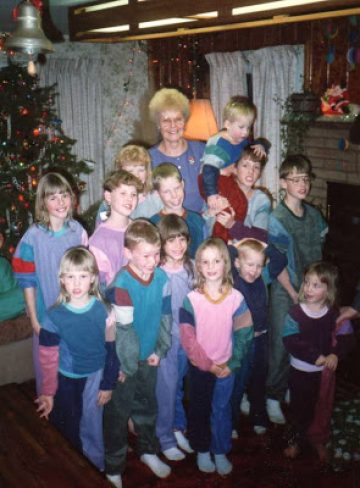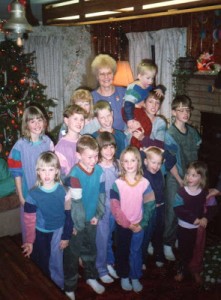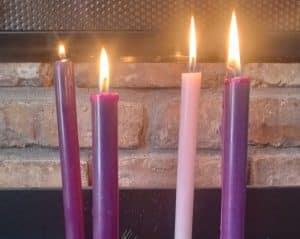I have been thinking a lot about memory lately, and a lot about traditions. The first is because of a very big book I read out loud twice while I was pregnant, called Memory, History, Forgetting. It is by the French phenomenologist, Paul Ricouer. He starts it by saying that the Greeks had two words for memory. One of them described the simple memories that just come to us without trying. We hear, or see, or smell something that reminds us of something else. The other term described memories that don’t necessarily come simply. Instead, they are the memories we actively search for, that we try to recollect. One of the main ways we do this is through telling stories, and essentially asking dear ones, “Remember when?” They might say “Yes,” and the story builds. It could also remind us that the same story can be recounted differently. For Ricouer, there are ways to recount a story so unfaithfully that they do violence or injustice, but there are also times that it is helpful to “recount otherwise,” to tell a different story. Remembering as story-sharing does something else. It helps answer a question some philosophers have had about memory: is it individual or collective? While one could make a case for either, it often seems to be both. We remember as individuals in a community, with narrative serving as the tie that binds. For us as Latter-day Saints, this also plays out each week when we sit in a room with those we call sisters and brothers and effortfully try to remember Christ. One of the ways we might attempt this, is by re-collecting the stories we have heard or read about Christ, including the ever meaningful, ever hopeful story of his birth.
I have been thinking about traditions, because I often think about traditions in December. I love remembering the way that my family celebrates Christmas and asking others the ways that their families do. I can feel close to my family, even when I’m an ocean or whole large landmass away. I feel part of something big and beautiful and sometimes messy, and I feel the warm feelings that I’ve come to associate as the spirit. (Or home. Or love.) Other’s traditions can feel a tiny bit foreign to me, but they can be wonderful to learn about, too. Sometimes I gain new insights, or new eyes to see those insights–to see inside something I have been looking at for a long time.
This happened to me on Sunday, but not quite with family traditions and rememberings of Christ’s birth. It happened with something slightly broader. My husband and I tried to sing along with friends, as we all tried to sing along with Handel’s “Messiah.” It was the first time for me, and because I am not a strong singer, it was hard. It was also beautiful and powerful, and a fitting tribute-tradition to our Savior’s birth, that I was grateful to experience first hand, in a chapel that I was grateful to sit in first hand, that was so different than the room I generally worship in.
A little while after that, my husband and I went with our sleeping babe to another church’s recreation of the journey to Bethlehem. It involved a 45 minute walk through a wooded path on a dark and frigid night, with a series of guided stops. There were two that gave me pause in the best way. One was to the shepherds watching their flock by night. They spoke amongst themselves, normally, casually, then a light appeared from a place that I wasn’t expecting, and I saw three angels. They spoke gentle, familiar words, and sang via a gentle (if still powerful), familiar song: “Gloria, in excelsis Deo!” And I started to cry. Not because I love the song, though there might have been a measure of that too. I started to cry because each of those speaking, singing angels was a young woman. Aside from a small number of beautiful paintings, I can’t remember ever seeing angels depicted as female. (All of the named angels in the scriptures are male.) The other soul-stirring moment was at the manger.
I have seen live nativities before–this was not the first. It was, however, the first one I have visited that was enclosed, and that enclosure mattered. I stood near Mary, Joseph, baby Jesus, and another angel, and even nearer the animals. I was so near in fact, that I could smell them. There wasn’t enough air to dissipate the scent. I have long known where Mary gave the Christ child life, but smelling the less than pleasant smell heightened everything. I thought new thoughts, and had new memories. Some were of my own experience giving birth. I wanted to be surrounded by peppermint and lavender (and I was). I demanded that my husband stop eating his Indian food because it (a smell I normally delight in) became offensive to me (and he eventually did). But this is what Mary might have smelled. What else may she have sensed? What else may she have felt? A year before, I heard a primary chorister explain to the children that Mary lay Jesus in a manger because she was tired, and it felt true. Now I remembered that her belly would still be soft and full, that there would be fluid and blood, and that she would be hungry and thirst–possibly more so than she had experienced previously. Things became real that weren’t real to me before, including the mixture of earthiness and divinity present at every birth. I sensed the magnitude that this was the very regular, vulnerable, and powerful way Christ came to earth.
Then we went home, and my husband projected the First Presidency Christmas devotional onto our wall. We listened to songs and talks that felt the most familiar out of everything I experienced that Sabbath, for good reasons: This is the community I have been a part of since birth, that I have remembered with since birth. They tell the story of Christ in a way that I am used to hearing. Their tradition is my tradition. And all of it was nice (particularly President Oscarson’s remarks on another alignment of shared stories), while they were different than the earlier experiences that felt so different to me. I was grateful for each one, for traditions and recollections that tied me to my own people, as well as those that tied me to others, and permitted me to hear the same story, told by another teller. It made for a beautiful, full day in this beautiful, full season.
Have you experienced something similar? I want to remember together with you, however you and your family remember Christ’s birth, or even however you add light and love to this dark, cold time. I will share just a few of mine. When my siblings and I were small, my granny made us and our cousins pajamas every year, that we affectionately dubbed Granny Jammies (that I recently learned my cousins called Jam-ups). When we were all together, we would model them on Christmas Eve, with lots of twirls and bows. My mom has carried on the tradition by gifting her grandchildren matching Christmas jammies each year. Though I mentioned above that I’m not a strong singer, many of my family members are. We love to sing together. Many of the songs celebrate Christmas. Many celebrate Bob Dylan and the Band. Our names aren’t written on Christmas packages, only nicknames. They are most often faux nicknames, identifiable, but not what we are called. (Real examples from the real past include Madam Librarian, Philosopher Queen, and High Jumping Hottie.) It takes my magic-making mother a lot of time and creativity to think of new names every year for each person, and I am grateful.
Please share your traditions!






